Many people view reptiles as cold and distant animals that do not really communicate. However, that is far from the truth.
You may have heard, or noticed, that:
- Bearded dragons wave their arms;
- They can change color;
- Bearded dragons are hardy and not prone to diseases.
But did you know that:
- Beardie gestures are not random; they all have their meanings.
- Beardie’s color change can tell you something about their health, mood, and environment;
- Although bearded dragons are generally hardy, they can fall victim to several common diseases which you should pay attention to.
Although they are not truly social creatures, bearded dragons do have ways of communicating their moods and intentions to other beardies, and even to you, a human beardie owner.
Even more importantly – how your beardies look and what they do can tell you a lot about their health. And monitoring health is important – although beardies are considered hardy, they can still become infected with some common reptile diseases.
Quick Navigation
> Further Reading: The Complete Bearded Dragon Care Sheet
Bearded Dragon Behavior & Body Language
Just because bearded dragons are not vocal, that doesn’t mean that they do not communicate. Beardies use body language to interact with members with their own species, as well as other creatures they encounter.
Humans do not understand these signals intuitively. We have learned about them through study and observation. It is important for every bearded dragon owner to learn to interpret the gestures of their pets.
Common behaviors of bearded dragons include:
- Head bobs
- Waving
- Changing color
- Mouth gaping
- Beard puffing up
- Tail pointing upwards
- Basking
- Hiding
Abnormal and undesirable behaviors of bearded dragons include:
- Lethargy
- Wobbly walking
- Lack of movement
- Moving the front legs only
- Twitching or jerking movements
- Looking upwards for no reason (“stargazing”)
- Soaking too much
Additionally, some common behaviors should be interpreted as abnormal if they are prolonged or if they appear in an unusual context. For example, while it is normal for the dragon’s beard to turn black when he is excited, the beard that is dark all the time indicates that your beardie is distressed or in pain.
That is why it is worthwhile to take a deeper look into the common behaviors of bearded dragons.
Waving: Why Do Bearded Dragons Wave?
When you appear in front of your beardie, sometimes he will raise his front foot and literally wave at you. This is a hilarious situation because it looks like he just said “Hi!” to you.
Well, that is because he is saying “Hi!”. Sort of.
This “greeting” essentially says two things: “I am here,” and “I come in peace, don’t hurt me.” It’s both a signal of presence and submission. That is the reason why insecure young beardies will perform the wave more often than mature adults.
Beardies will use waving among the members of their own species, as well as with humans and other animals they encounter.
Head Bobbing: Why Do Bearded Dragons Bob Their Heads Up And Down?
Head bobbing is a sign of domination. It occurs when bearded dragons want to establish a social hierarchy among themselves.
Faster bobs are meant to serve as a warning and a threat. Slower bobs signal submission.
Also, male beardies will do jerky bobs when they are courting a female. Some beardies will bob obsessively when going out of brumation, especially if they can feel the scent of a female. If a male bearded dragon is bobbing his head at you and it is springtime – it’s just his hormones running wild in the face of a breeding season.
Sometimes beardies will do short slower bobs that look like nodding to acknowledge each other – or their humans.
Changing Color: Why Is My Bearded Dragon Turning Dark or White?
Why do bearded dragons sometimes turn black? The main reason is temperature regulation.
Black surfaces soak in more warmth. That is why you will often see bearded dragons turn black and flatten out in the morning when you turn on the light, or if you take them out for a walk and basking in the natural sunlight. Some beardies will also turn black when they get aggressive.
However, in combination with other disease symptoms, blackened skin can be one of the signs of stress or disease.
Why Is My Dragon’s Beard Turning Black?
The bearded dragon’s trademark beard will become enlarged and dark if he is excited, scared, aggressive and ready to attack an intruder, or ready to mate. In these cases, the black beard is a passing occurrence.
However, if the black beard is persistent, it is a sign that your beardie is suffering. He could be in pain, or there might be something wrong with his habitat. Some older bearded dragons will show a constantly black beard before the end of their lives.
Why Is My Bearded Dragon Suddenly Pale?
If your bearded dragon turns pale, that is a sign of an upcoming shedding. You can read more about shedding below.
Also, some beardies will get lighter when sleeping!
Basking
Basking under a heat lamp or in full sunshine is a behavior that beardies exhibit daily. That way they collect heat, and UVB radiation which helps create vitamin D3 to metabolize calcium. As said above, many bearded dragons will flatten their bodies and turn darker to soak in as much as warmth and ultraviolet light as possible.
Mouth Open: Why Do Bearded Dragons Open Their Mouth?
The most common reason for a beardie to keep his mouth open is controlling his body temperature. Bearded dragons will often open their mouths while basking to prevent overheating.
Holding the mouth open is completely normal as long as it happens in short sessions. However, if it goes on for a long while, it could mean that the terrarium is too hot, or that there are some underlying health issues.
If coupled with heavy breathing, gaping mouth can signal a respiratory infection.
Licking: Why Do Bearded Dragons Lick?
The tongue is one of the bearded dragon’s main tools for exploring the world around him.
Like other reptiles, beardies have a Jacobson’s organ, which lies at the roof of their mouth. When they lick something and then retract the tongue, its forked tips pass the smell to the Jacobson organ. That way they use licking for both tasting and smelling.
Yawning: Do Bearded Dragon Yawn?
All lizards can yawn from time to time. A bearded dragon’s yawn consists of puffing out the beard a few times (this may look like hiccups) and then opening and closing the mouth. Yawning usually happens in the morning, or upon waking from a nap.
And why do bearded dragons yawn? As strange as it sounds, no one is really sure what is the true function of yawning, not just in reptiles, but in any species.
Tail Curl: Why Is My Bearded Dragon Tail Curling?
The tail curling gesture in bearded dragons signals alertness. Bearded dragons will curl their tails up when excited, chasing prey or running around for other reasons. They will also exhibit the tail curl as a reaction to warmth – when put in hot surroundings or in warm water.
Brumation: Do Bearded Dragons Hibernate?
Brumation is a reptile version of hibernation. It occurs within the same time period – fall and winter, but it is different from hibernation in the sense that reptiles do not shut down their metabolism completely – they just slow it down. Also, they do not really “sleep.”
Each bearded dragon will brumate differently and maintain different levels of activity. However, all reptiles need to stay hydrated during brumation.
While brumating, your beardie will fall into a slumber that will last for months, during which he might not eat or drink a lot – or not at all. If you get worried, always remember that brumation is a natural process which should not be stopped.
What are the Signs of Bearded Dragon Brumation?
The first sign of brumation is a radical change in behavior. That includes:
- Frequent hiding;
- More naps and “sleepy look;”
- Sluggish movement;
- Poor appetite.
Otherwise, bearded dragon ready to brumate should seem healthy – with clean and elastic skin, clear eyes, no gaping mouth or other signs of infection.
If your beardie is trying to brumate out of season (in the summer), or he is under a year old – it is highly likely that his health is compromised and that his behavior only mimics brumation. Poor UVB lighting, improper temperature, vitamin and mineral insufficiency, vitamin overdose (especially with D3) or infections can all prompt the brumation-like behavior. The underlying causes should be addressed as soon as possible.
In nature, weak or sick individuals often die in during brumation. Fortunately, there are several things you can do to make sure your dragon will go through brumation safely and “wake up” with plenty of strength left.
> Further Reading: Check out our Bearded Dragon Brumation article.
Shedding: How Often Do Bearded Dragons Shed?
Shedding is a normal process in all other lizards and snakes. Reptiles lose their old skin in one piece, or in chunks – like bearded dragons.
One of the reasons for lizard shedding is that they literally outgrow their old skin. That is why juvenile and young bearded dragons that grow fast will shed much more often.
Shedding may last three to ten days. During this time, beardie’s look and behavior will change.
Signs of shedding in bearded dragons
Sometime before the shedding, you will notice that your beardie’s color will change and become dull.
At this time, he will get itchy and uncomfortable, which will cause him to avoid food and possibly sleep a lot. Some beardies do not eat through the entire shedding process, and that is perfectly normal.
How to Help a Bearded Dragon with Shedding?
There are ways to help your beardie with his shed:
- Warm soaks and gentle scrubbing with a soft toothbrush;
- Misting your beardie’s body;
- Not bothering him too much in general.
Although it might be tempting to pull off the skin of your beardie – never do it unless a piece of skin is completely loose. If there is any resistance – stop.
Also, there are numerous products designed to help with shedding in lizards. These may be of use if your beardie is prone to incomplete sheds.
Bearded Dragon Unusual Behavior
Unusual behaviors in bearded dragons are usually signs of distress or sickness.
Some of these behaviors are essentially normal – it is normal bearded dragons to dig or defend themselves for instance – but they can signal the need for your intervention and help.
Other behaviors – such as constantly gaping mouth – are undoubtedly signs of sickness.
Angry Bearded Dragon: Why Are Beardies Hissing and Biting?
Bearded dragons are feisty and energetic lizards which can get “angry” for many reasons.
Hissing is a first warning sign. When a bearded dragon feels threatened, hissing is a way to warn the aggressor that he will defend himself. At the time of hissing, his beard will get puffed up and black as well.
Hissing will sometimes progress to biting, which is a pretty straightforward presentation of aggression.
Bearded Dragon Aggressive Towards Humans
If you got your dragon as an adult and he hasn’t been properly used to being handled or was mistreated by a human hand, he will see it as a threat and will defend himself the only way he can.
Do not risk getting bitten by trying to handle an aggressive dragon without protection. Wear thick gloves and try short daily sessions of handling, along with hand-feeding them some treats in their terrarium during meal time. When your dragon learns that your hand is not a source of discomfort, he will stop with the aggressive behavior.
Bearded Dragon Aggressive to Other Bearded Dragons
If you house several bearded dragons together and they become aggressive towards each other, the only solution might be to separate them.
Male beardies are territorial and will certainly fight; two males should never be kept together.
Females will often live together peacefully, however, always remember that every beardie is different. If you are planning to keep two or more beardies together, make sure to have a spare tank just in case things turn sour.
Glass Surfing: Why my Bearded Dragon Won’t Stop Scratching at the Glass?
Glass surfing usually indicates that your beardie is stressed by something in his environment.
New decorations, new tankmates, and an enclosure that is too hot or that has become too small are all reasons that can lead to glass surfing. Trying to climb glass is the beardie’s attempt to escape into a safer environment.
On the other hand, beardie who is often taken outside and enjoys it may also climb glass if he wishes to get out of his tank for a walk.
Digging: Why Is My Bearded Dragon Digging the Substrate?
Digging is a natural behavior of all bearded dragons which has several purposes.
Some beardies will attempt to dig when they are in search of a cooler and a more humid environment. If an adult female is doing a lot of digging during the daytime, it is likely that she is ready to lay eggs. Eggs can form even without the presence of a male.
As lacking a proper substrate for laying eggs will cause the female a lot of stress, you should put her in a separate tank with about a foot of sandy substrate in it.
> Further Reading: The Best Bearded Dragon Substrate
Illnesses and Diseases: the Signs of a Sick Bearded Dragon
Like any other creature, bearded dragons can get sick. There are several diseases that bearded dragons are especially prone to. Fortunately, most of them are preventable.
So, what kind of diseases do bearded dragons carry? Here is the list of the most common ones:
- Viral respiratory infections or pneumonia
- Metabolic bone disease (MBD)
- Atadenovirus
- Mouth rot
- Parasitic infections
- Photo-kerato-conjunctivitis
Bearded Dragon Respiratory Infection: Symptoms and Treatment
Respiratory Infection Cause
Respiratory infections in bearded dragons occur if their environment is too cold, too humid or badly ventilated. Also, stress, bad diet, and overcrowding can also lead to respiratory disease.
Respiratory Infection Symptoms
Most signs of respiratory illnesses are related to breathing. They include:
- Difficult and raspy breaths;
- Coughing-like exhalation;
- Mucus around the nose and the mouth;
- Gaping mouth;
- Lethargy;
- Loss of appetite.
Respiratory Infection Treatment
You need to deal with the potential cause of a respiratory infection immediately. Check and correct the temperature and humidity.
Most respiratory infections demand vet care. Your beardie will probably be prescribed injections or oral doses of antibiotics. Other than sorting out your beardie’s living conditions, do not experiment with home remedies for respiratory infections by yourself.
MBD: Bearded Dragon Metabolic Bone Disease
Metabolic bone disease is the most common metabolic sickness in captive bearded dragons and other diurnal lizards. It is a debilitating condition that leads to slow and painful death if not caught in time.
Metabolic Bone Disease Cause
MBD occurs due to calcium and vitamin D3 imbalance. Bones start to weaken, which then leads to deformities, paralysis, and death. It happens because of improper nutrition and supplementation, or improper UVB lighting.
Metabolic Bone Disease Symptoms
The symptoms of MBD get more drastic as the disease progresses:
- Tremors and twitches of fingers, feet, and legs;
- Hard knots along the spine
- Weakness;
- Paralysis of the hind legs
- Stunted growth in young beardies
- Receding lower jaw
- Bone fractures.
Metabolic Bone Disease Treatment
Metabolic Bone Disease can be treated effectively if you catch it early. Quality nutrition with sufficient calcium, UVB lighting, and proper terrarium temperature have to be ensured both as prevention and treatment.
> Further Reading: The Bearded Dragon Habitat
Bearded Dragon Poop: Healthy Poop, Diarrhea, White Poop, Green Poop
How Does Normal Bearded Dragon Poop Look Like?
Normal poop of a bearded dragon will look similar to bird droppings, though it should have a more distinct shape.
There are two different parts of lizard’s poop – one is dark, and the other is white or light pink. The white parts are actually urates, not feces – because of the need for water conservation, bearded dragon’s bodies have evolved so they can pass the urine in dry form. If the urates are yellow, that means that your pet might be getting too much protein from insect foods.
Insect meals will cause stool that is firmer, darker and dry.
Vegetable poop will be more watery, greener and may contain undigested fiber.
Sometimes there will be more water around the main part of the poo, and that is perfectly normal as long as the water is clear.
> Further Reading: The Bearded Dragon Diet
How Often Should a Bearded Dragon Poop?
How often you can expect your beardie to poop depends on his metabolism, diet and the temperature. Anything between 1 and 7 times a week is considered normal.
Is Watery or Runny Poop a Cause For Concern?
As with other animals, a bearded dragon’s poop is a good indicator of their health. Watery or runny poo can signal a health crisis – usually a parasitic infection. If your beardie’s stool looks unusual, smells particularly foul, or your beardie has to go several times a day, do not hesitate to call a vet and do tests to determine what the underlying cause of the runny poop is.
Bearded Dragon Impaction: Symptoms and Treatment
Causes of impaction in bearded dragons
Bowel Impaction happens when an animal swallows indigestible matter that blocks the intestines. Most commonly, the cause is a hard substrate such as sand, or chitin shells of insects that are too hard to digest, such as beetles or mealworms.
Symptoms of Impaction in Bearded dragons
- Lack of bowel movement;
- Inability to pass excrement;
- Swollen, bulging or hard stomach;
- Lack of appetite;
- Other signs related to pain and discomfort (black beard, sluggishness, etc.)
Treatment of Impaction in Bearded Dragons
Milder cases of impaction can be solved if you give your beardie a few drops of olive oil, or olive oil mixed with some applesauce, followed by a 20 to 30-minute bath in lukewarm water and a really gentle belly massage. Although this is a home treatment, it is best to do it after consultation with a vet.
Serious cases of impaction may have to go through surgery.
Bearded Dragon Mouth Rot: Symptoms and Treatment
Mouth rot is an infection of the mouth, and it can prevent your bearded dragon from eating completely. There are several signs of mouth rot watch out for:
- Puss-like yellowish or white substance in the corners and on the edges of beardie’s, mouth;
- Swelling or abscess-like structure in the mouth;
- Losing teeth;
- Lack of appetite;
Mouth rot demands veterinary attention as soon as possible.
Eye Infection, Eye Bulging, Swollen Eyes: The Bearded Dragon Eye Problems
There are several forms of eye issues that occur in bearded dragons.
Swollen eyes can be a sign of eye infection or injury, a vitamin A overdose, or (rarely) a parasitic infection. An upcoming shedding can also make your beardie’s eyes a bit puffy, so it is important to watch out for other signs to make a proper assessment of what’s going on.
Droopy Eyes – when eyelids look loose, like those of a basset hound – can be a sign of kidney issues; it is an indication to see a vet as soon as possible.
Closed eyes – if your bearded dragon keeps his eyes closed too much and you are not monitoring the level of UV radiation in your tank, it could be a sign of photo-kerato-conjunctivitis.
Atadenovirus: What is it?
The Cause
Atadenovirus is a highly contagious viral infection which can be deadly to bearded dragons, especially the young ones.
The Atadenovirus Symptoms
Other names for the disease – wasting disease and star-gazing disease give a clue about its presentation.
Juveniles affected by atadentovirus are smaller and thinner than the rest of their clutch. As the disease progresses, the neurological symptoms will start to show – the dragon will start looking upwards for no reason, often flipping over in the process. As the disease affects movement more and more, the sick beardie will stop feeding, have difficulty breathing and in the end, die.
Atadenovirus Treatment
There are no drugs that eliminate atadenovirus. All that can be done is the management of the disease and the prevention of spreading. Affected beardies should be kept by themselves and away from other reptiles. Also, never cycle uneaten food, substrate, and equipment between tanks.
When buying a juvenile bearded dragon, always go for the larger, plump individuals.
Juveniles under 90 days old usually die within those first three months. Some survivors can live a relatively normal life, but have to be well-cared for – stay warm, always have UVB light and be checked for parasites occasionally.
Bearded Dragon Parasites and Mites
All lizards, including bearded dragons, can fall prey to parasites. There are internal (intestinal) parasites – endoparasites, and external – ectoparasites, found on the skin of reptiles.
Intestinal parasites in Bearded Dragons
Some of the most common endoparasites in bearded dragons:
- Pinworms
- Roundworms
- Hookworms
- Coccidia
All of them cause similar symptoms:
- Weight loss
- Lack of appetite
- Vomiting or regurgitation
- Strange stool or diarrhea (with or without visible parasites).
- Bloody diarrhea
- Pneumonia and respiratory issues.
The parasites have to be diagnosed by a veterinarian who will take stool samples and perform tests and microscopic screening to determine the type of parasite and its concentration.
The number of parasites is important – some animals will have a count which is low enough not to cause any symptoms. However, if the hygiene in the tank is poor, the infection may flare up.
A good vet will also recommend the right de-worming medicine for your beardie.
> Further Reading: The Bearded Dragon Diet
Ectoparasites in Bearded Dragons – Mites
Mites are the most common external parasites of reptiles. These little tick cousins suck blood by piercing the skin. They are difficult to kill because the chemicals and the heat that would kill a mite would also kill your pet.
Mites like to aggregate in the folds and crevices of lizard’s bodies. That is why armpits, joints, areas around eyes demand special attention when doing inspections or treatment.
Signs of Mite Infestation
- Excessive soaking in the water bowl.
- Scratching on the rough surfaces in the tank.
- Tiny, red or black dot-like creatures on the beardie’s body.
- Drowned mites in the water bowl
- Damaged skin and incomplete shedding
Mite infestations can also lead to anemia, secondary infections and other diseases which are transferred by mites.
Treating Mites in Bearded Dragons
Since mites are pretty hardy, there are no absolutely effective treatments that are also totally safe for your beardie. Even those insecticides that are certified to be used topically on pets such as Frontline still carry risks. Consult a reptile vet and do a careful study of all the options available before proceeding. When you decide on the treatment, follow instructions carefully to ensure the safety of the reptile and yourself.
If you are a child, never try to apply insecticide treatments yourself – ask adults for help!
A treatment that is 100% safe (though not as efficient as insecticides) is a warm bath with a small addition of Betadine (Povidone-iodine). Betadine is a topical antiseptic safe to use on snakes and lizards. However, you should never submerge lizard’s head in the solution as it may poison him.
Disinfecting the Tank
You will also have to disinfect the enclosure because mites lay eggs and hide in the corners and other inaccessible pockets of the tank.
All disinfection methods should be done without your beardie present inside.
Options for sterilizing are many. One of the chemical-free methods of disinfecting glass tanks is to seal the tank and leave it in the full sun when outside temperatures are high – 29-32º C (mid-80s-90s F).
The temperature in the tank should exceed 55º C (131º F) and remain like that for several hours to destroy all mites.
If it’s not that hot where you live at the moment, you can use some of the many chemical methods. No-pest strips and flea collars are perhaps the simplest to use. Make sure your beardie is in a spare tank while you treat the primary one. Some sources claim that lizards can remain in the tank if they are not in direct contact with the strip, but I would avoid the unnecessary risk of poisoning whenever possible.
All substrate should be removed and disposed of. If you are using rock slate, you can bake it to kill the mites.
Parasite prevention
Maintaining excellent hygiene in your tank is the first step in parasite prevention. Also, it is useful to take your beardie to vet check-ups and de-worming treatments regularly.
If you just got a new dragon, never introduce him to other dragons until you are 100% sure he is healthy and parasite-free. Quarantine for reptiles can last for several months.
Also, never cycle food, tools, and decorations between tanks.
> Further Reading: The Bearded Dragon Habitat
Seizure: Bearded Dragon Twitching
Seizures in reptiles are the signal that something is wrong with their nervous system. Seizures can occur for several reasons:
- Infections that affect the nervous system;
- Injury to the head or the spine;
- Poisoning;
- In-born defects.
Dehydration: How Do You Know If a Bearded Dragon Is Dehydrated?
Bearded dragons seldom drink water from a bowl. They get most of their fluids from their food and baths. Dehydration can be both a symptom of an illness and a stand-alone health issue.
The signs of dehydration in bearded dragons are:
- Wrinkled skin
- Skin that does not retract when gently pinched, but holds shape.
- Sunken eyes
- Lethargy
- Lack of appetite
If your dragon becomes more lively after drinking some water, it is another sign that dehydration likely the cause of his bad shape.
If your dragon has enough water available and you soak him regularly and he still seems dehydrated, you should take him for a check-up.
Old Age and Death: Bearded Dragon Dying Signs
When bearded dragons approach the age of 10, they may start showing signs of old age and declining health.
Some of the signs that your beardie’s life is coming close to an end are:
- Lack of appetite or a failure to eat on their own
- Partial or complete loss of motor ability, lack of movement
- Limpness
- Sleepiness
These signs gradually progress from mild to severe. The decline may last from a couple of weeks to a couple of years. However, the road is not always linear – some beardies can have a crisis but still manage to recover and live on for another few years.
Never give up on your aging or sick pet. Accept that he may have ups and downs during this time. Know that he will be more susceptible to stress and disease, so make sure temperatures are right and that UVB light gives off the desirable amounts of radiation.
Beadies that have become inactive still have their needs. Many will have to be moved around the terrarium, as well as fed and hydrated by hand. Remember to stay gentle at all times.
Many owners worry if their pet is uncomfortable and wonder if they should have him euthanized.
As a general rule, if the beardie’s mouth is often gaping and his beard and/or tip of the tail turns dark for an extended period of time, he is showing signs of discomfort. If this goes on without any improvement, it is time to talk to your vet about options.
At the final stage, most bearded dragons stop moving and eating. When activity stops completely, it may be hard to tell if they are really dead because their nerves may be active for some time after the passing.
If you suspect your bearded dragon has died, it is best if a vet can check the basic vital signs – response of the pupils to bright light, and see if there is any blood flow via a doppler ultrasound. When you are unable to reach a vet, you can gently turn your dragon onto his back, and then onto his side while holding him. If there is no movement, it is most likely that he is gone.
Take Care!
I hope that this article will help you provide the best possible care for your beardie, as well as to understand what his displays are trying to tell you.
Knowing as much as possible about your beardies’ behavior and wellbeing is the key to providing them a life they deserve. Recognizing the warning signs in time can sometimes mean a difference between life and death.
In the end, a small disclaimer: I am a reptile enthusiast. I carefully gather and study the available information to assess the health of my own pets, and with a great sense of responsibility, I convey this information to you. However, I am not a veterinarian.
If you find yourself in doubt about the health of your bearded dragon, do not hesitate to reach out to a vet in your area – ideally, the one who is experienced in treating reptiles. Vet visits (and vet bills) are an integral part of owning any pet, and bearded dragons are no exception.
And how does your beardie communicate? Have you had any experience with bearded dragon diseases? We hope to hear all about it in the comments!
Glossary
Brumation – A period of inactivity and decreased metabolism rates in reptiles; unlike hibernating mammals, reptiles do not truly sleep during brumation, and they occasionally have to get active again to drink water and avoid dehydration.
Ectoparasites – Parasites that live and feed on the skin of their hosts.
Endoparasites – Parasites that attack inner organs (usually digestive tract) of their hosts
Hibernation – A period of inactivity in animals during which they become physically and physiologically less active, their metabolic processes slow down, and growth stops.
Lethargy – A lack of energy and enthusiasm.
Quarantine – A time period in which animal is kept isolated from other animals and carefully watched for signs of diseases. For reptiles, it is recommended to keep them in quarantine for 3-6 months.

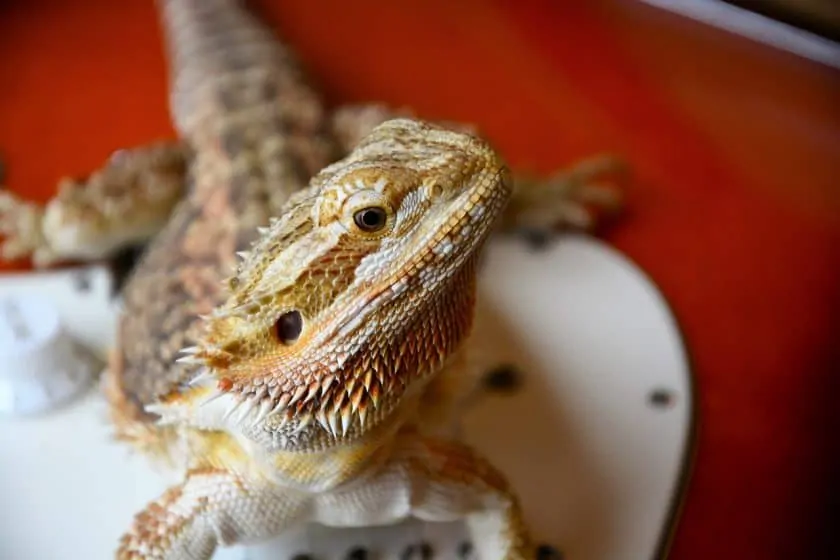
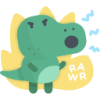


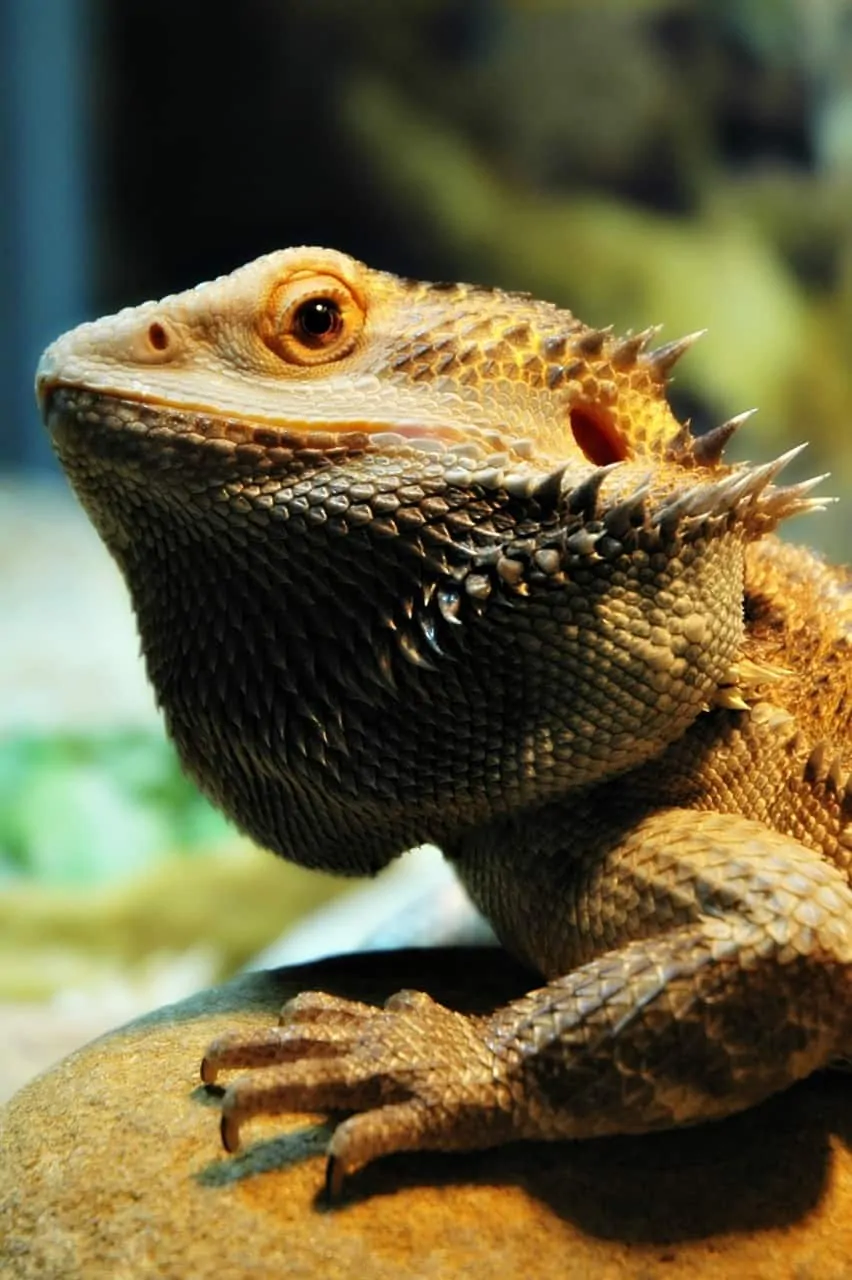
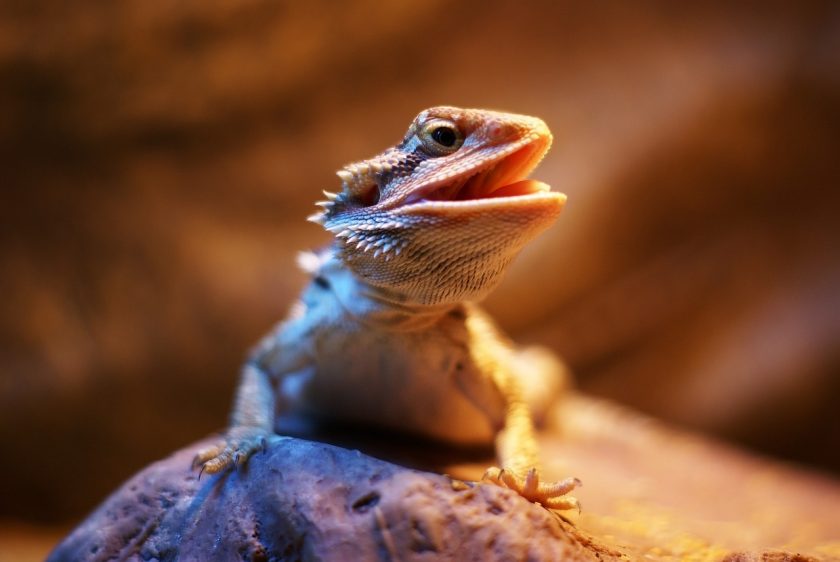
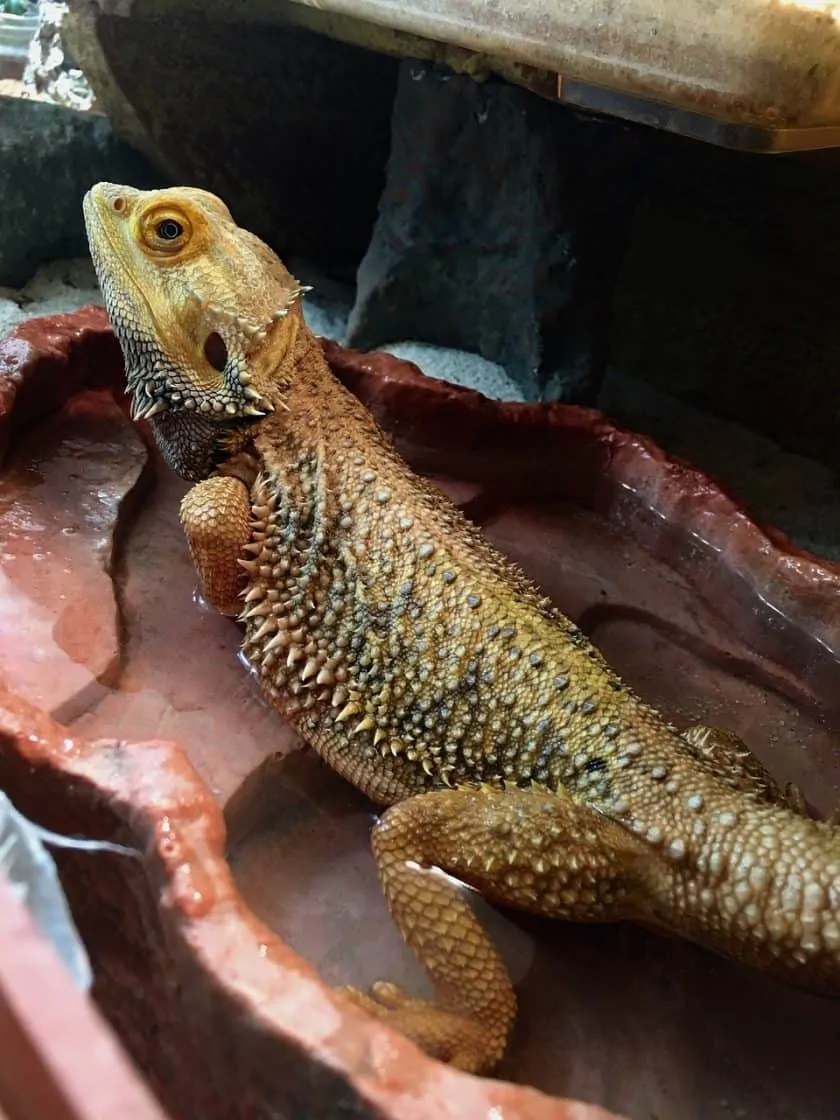
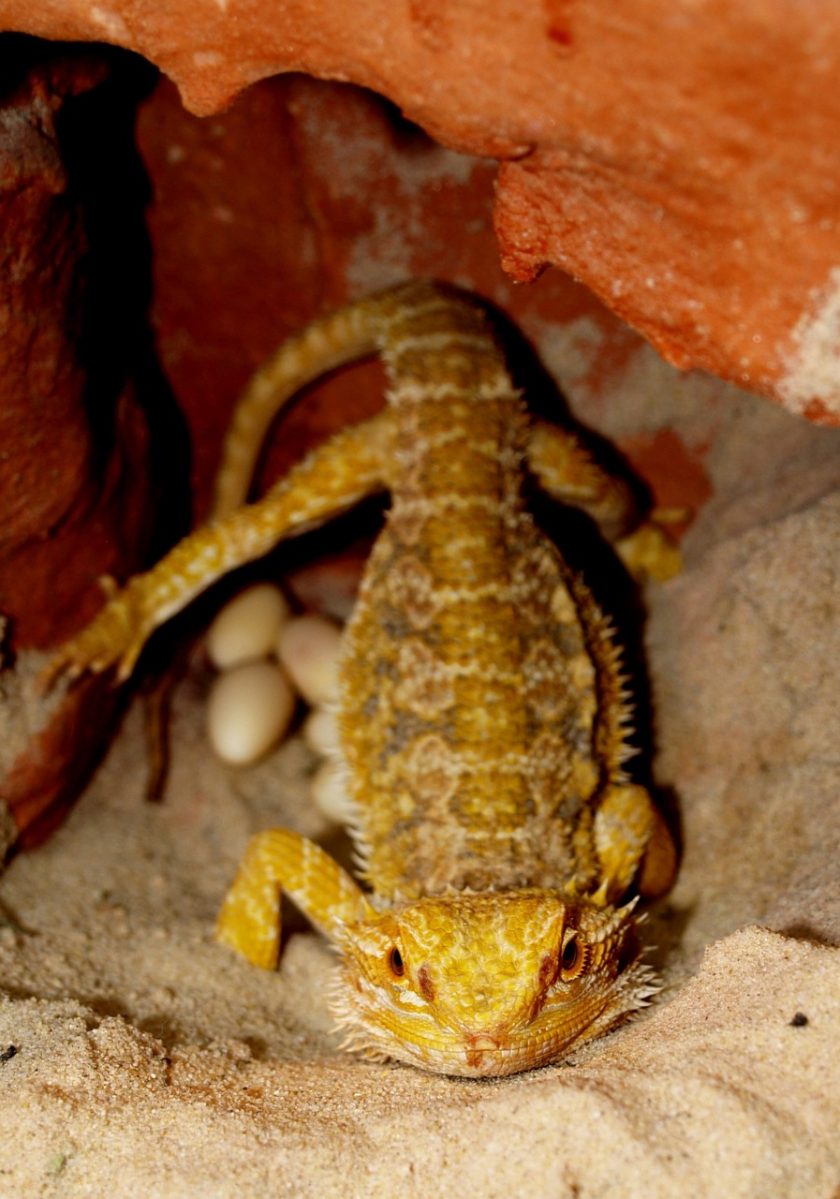
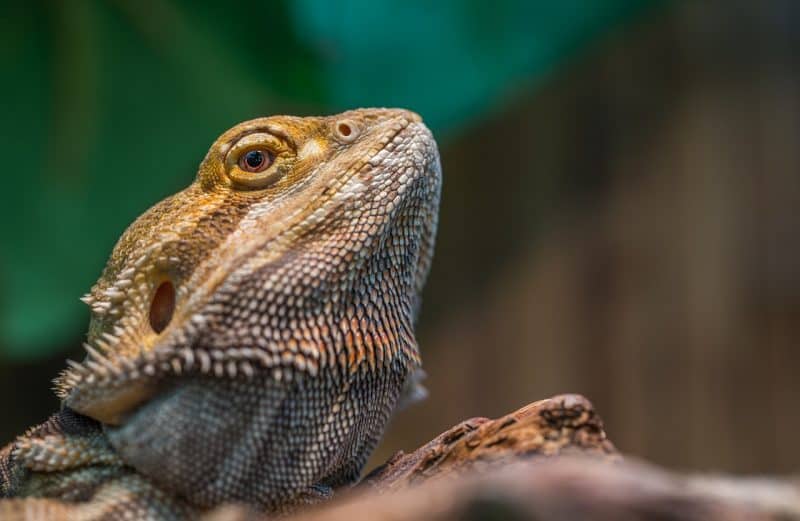
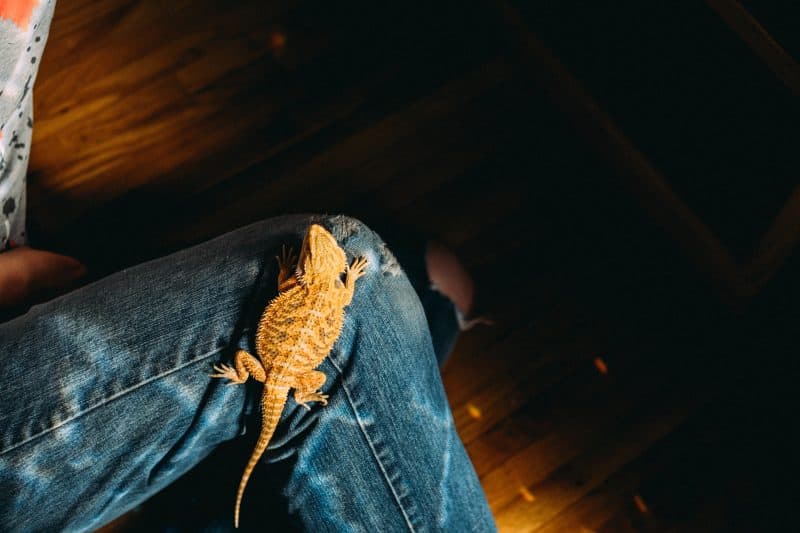

15 Comments
Thos has alot of great advice. I would sat the only thing is that I have been told to not let beardies go into brumation. Reason being is that in captivity (unlike in the wild) we provide them with more food, water (when bathing) and supplements which can also lead to impaction if they brumate. It would be just like us if we just laid around and slept alot, we would be constipated badly. The same will happen with them. Only thing is, they will get gut rot. So handling them some and doing all the things you do daily should not change because of brumation.
Hi Ann,
Of course, there are different schools of thought on all things concerning reptiles. I have heard the idea about not allowing brumation before – but I didn’t quite buy it. Here’s why.
Animal species, lizards included, have evolved to follow a certain seasonal pattern. In some species, their metabolisms are hardwired to have a resting period. If that’s what their ancestors have done for millions of years – a few generations in captivity won’t change it. Thus, although you can keep them alive without it, their bodies need and “expect” this resting period.
The best and most humane way to keep reptiles in captivity is to try to mimic their natural environmental conditions and life cycle.
On the other hand, like many mammals and birds, warm-blooded humans have never evolved to hibernate or brumate – there is no way we can slow down our metabolism long-term without damaging our bodies. So the comparison about laying around and sleeping and getting constipated is just not right.
The final proof for me that brumation is a natural part of the bearded dragon’s life cycle, even in captivity, is that sometimes you won’t be able to stop it. Even with controlled temperatures, some beardies will be triggered by cues from the environment likely unknown to us – could be a pressure drop or shortening of the day – and go into slowed state and lose their appetites.
I still don’t have studies to prove it (who knows, maybe someday), but I have a hunch that not letting lizards that naturally brumate go into brumation can shorten their lifespan. Also, handling a brumating reptile to try to keep them “awake” and active is certainly not pleasant for them and can lead to stress buildup.
There are ways to enter this resting period safely. When preparing your reptile for brumation, you don’t simply shut down their heating and lighting – all changes happen gradually, day to day – from temps going down to “days” getting shorter to offering less food. All this time, you’re tracking their state and making sure they’re healthy, passing their stools, and so on.
Still, you are on the right track when you suggest that brumation is always somewhat risky. In nature, there are always weak individuals that never wake up from their winter slumber or sleep. If your pet lizard is sick or otherwise weak, I would never recommend lowering temperatures and initiating brumation, as this could lead to the problems you mentioned and end fatally. However, in provenly healthy, strong animals, it should pose no issue.
Again, with beardies, a weekly bath even when they sleep is needed to ensure good hydration. Take a look at our special Bearded Dragon Brumation article for more details.
This is everything ill ever need!
Do you have any suggestion as to what my approx 2 year old male Beardie is doing when he sometimes gently scratches at my neck/chest/face when he’s sitting there? Is it attention seeking? Or does he want something else? He usually scratches with just one hand, but occasionally he’ll throw a rear foot kick into the mix.
Hi Kim,
Bearded dragons have a complex system of sign language which includes hand waving and head bobbing. The only other thing I can think of is that he doesn’t feel secure and is quickly trying to get a better grip.
Thank you for the very informative article! We got our first beardie about a year ago. They are such wonderful creatures. Full of humor and love. I appreciate the info on what to look for to make sure our boy is comfortable and happy!
I have very healthy and colorful beardy named toothless. he is nice and fat, no signs of bone diseases or parasitic infections. he loves to nap, too. He likes sleeping in my hood lol. I got him when I was 8, and he was just a few months. I am now 13, going for 14 in a few days, and toothless is 5 now. (he has the same birth date as my dad hehe). His tank has a layer of sand, a small heat pad in his cave, a tittle tree for him to climb, a little pillow he likes to rest on, a small tunnel that he likes to sleep on, and a water dish and a food dish. he LOVES to be hand fed. his fave is raspberries. He also really likes horn worms. He likes to use his food dish as his litter box, too lol… at least I dont have to clean it out of the sand all the time. He gets anual baths like every other week. He also wants to eat my baby painted turtle, which is funny. I would send pics if i could. Or maybe I can…….. ANYWAY! He had small white mites at some point, which lived under his food bowl in the sand. I would also find it in the food I placed in his food. But I cleaned that a while ago with boiling water. Toothless got a warm 40 min bath every other day, until there were no more mites that I could see (took a week) I havent seen any since. so, any feedback on how toothless is taken care of?
Hey, Ares.
More or less, it sounds like you’re doing a great job! I’m not sure about the “mites” you speak of, as snake mites (the kind bearded dragons get) are usually red to black in color. You should probably inquire with your vet if they reappear.
The only thing I’d caution you about is him pooping in his food dish. That can cause him to become sick, so make sure you are cleaning it out with soap and water anytime he poops in it.
Keep up the good work!
Sounds like sand lice. Is it sand from outside?
Izzie ouR 12” dragon pounces on a sock, wrestles it into “submission, and lays around with it, sometimes hiding with the sock under a low table.
It Izzie trying to mate with the sock? Fighting with it? Just playing?
Very entertaining behavior but makes me very curious.
Hey, Jim.
That’s kind of bizarre. He may be trying to breed the sock – I have seen green iguanas get amorous with inanimate objects, but I’ve never seen it with bearded dragons (probably because most of mine have been members of breeding colonies, so they had access to the real thing).
I wouldn’t worry about it, though I would urge caution. The threads of the sock may entangle his teeth or nails, or he could end up partially swallowing it, which would be a big medical problem.
These lizards sure are strange sometimes, right?
Best of luck!
My bearded dragon who is 8 now has developed an abscess over his eye. Took him to the vet where they removed the lump and put him on an antibiotic for 10 days as well as a topical. It has since returned bigger than before and now has a smaller bump forming on the lower lid! Ugh!!! He is healthy otherwise actually slightly overweight. I dont know what to do next I’ve been hearing it’s a light issue. Bulb vs coil coil causing eye infections? Is that true? I just spent 80 dollars on a new bulb! Is anyone out there that knows how to treat my poor little guy?
Hey, Jennifer.
Sorry to hear about your beardie! I would recommend working closely with your vet to treat the infection – you don’t want this to get worse and potentially lead to the loss of his eye.
It sounds like an enclosure hygiene problem, so make sure you’re keeping his habitat very clean. I don’t think the light would be responsible for causing an infection.
Best of luck!
Thank you for the information. I have a bearded dragon who is about 8 yrs. I inherited Georgie from my mom that passed 3yrs ago. My mom would feed him baby food along with grease vegetables and fruit. I have been feeding him lrg. Cockroaches but in the past 9 months he refuses to eat them and now he won’t eat the vegetables and fruit. My vet gave me some paste for anorexia in dragons. I add baby food to it but I have to force the syringe into his mouth. He loves running around chasing the cats while I watch him. The vet also said I need to take him out into natural sunlight everyday and he loves it. Once he escaped I was sure he was dead, I live on a lake in the woods. Three weeks later he showed up by the front steps. I don’t know if his behavior is physical or mental. Vet isn’t sure either. If you have any advice please let me know I’m desperate. I rescue animals of all varieties from parrots wildlife domestic and amphibians. I have a tank full of frogs that were tadpoles when I found them. The one problem is that they aren’t afraid of me. I usually let them free as soon as they turned into frogs but winter set in and they should have been hibernating so they stayed I don’t even know what kind they are they look like toads but they are frogs.
Thanks again for what you do for Gods little creatures!
Great article for inexperienced beardie owners!